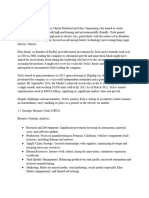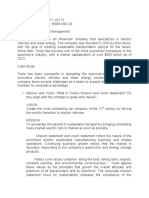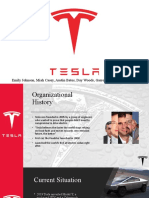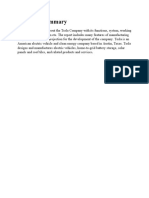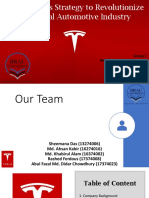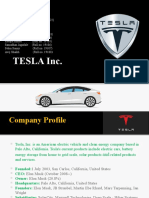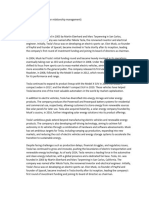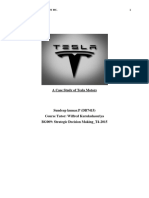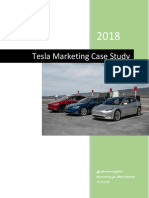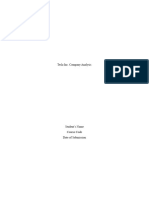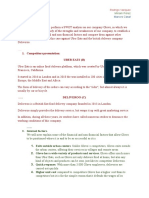0% found this document useful (0 votes)
83 views9 pagesStrategic Case Analysis
The document provides a strategic case analysis of Tesla, Inc., detailing its background, products, market position, and competitive landscape. It highlights Tesla's strengths in innovation and sustainability, while also addressing challenges such as competition and labor practices. Recommendations for future growth include expanding production capacity and enhancing autonomous driving technology.
Uploaded by
dalmaCopyright
© © All Rights Reserved
We take content rights seriously. If you suspect this is your content, claim it here.
Available Formats
Download as DOCX, PDF, TXT or read online on Scribd
0% found this document useful (0 votes)
83 views9 pagesStrategic Case Analysis
The document provides a strategic case analysis of Tesla, Inc., detailing its background, products, market position, and competitive landscape. It highlights Tesla's strengths in innovation and sustainability, while also addressing challenges such as competition and labor practices. Recommendations for future growth include expanding production capacity and enhancing autonomous driving technology.
Uploaded by
dalmaCopyright
© © All Rights Reserved
We take content rights seriously. If you suspect this is your content, claim it here.
Available Formats
Download as DOCX, PDF, TXT or read online on Scribd
/ 9
